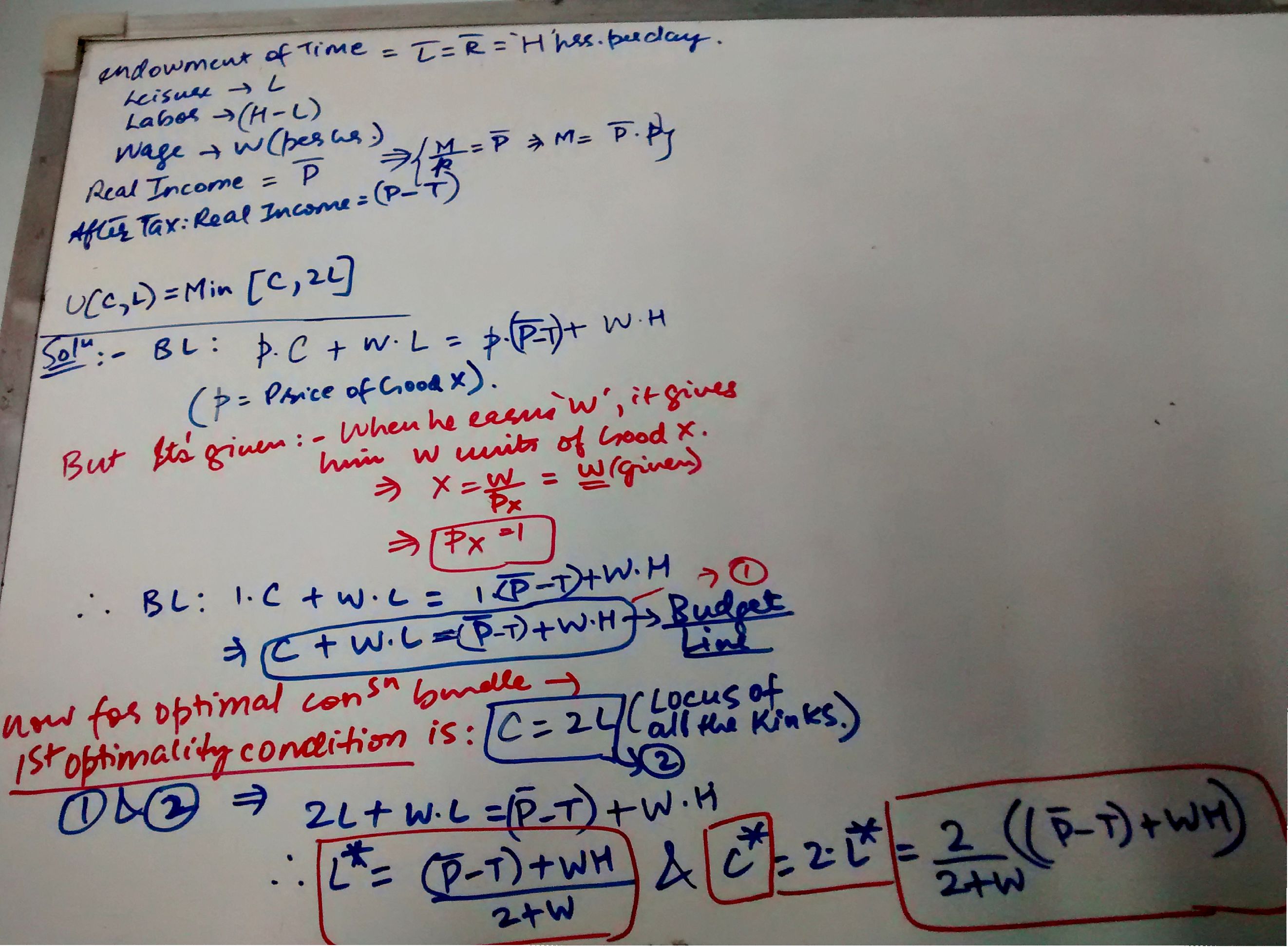See Budget line is: C+WL=(P-T)+WH--(i)
Now optimality condition whew utility fn is of type min{C,2L}
Is C=2L---(ii)
Substitute (ii) in budget line (i) and you get the answers as above!! You can also see the solution below but my writing might not be so clear:
